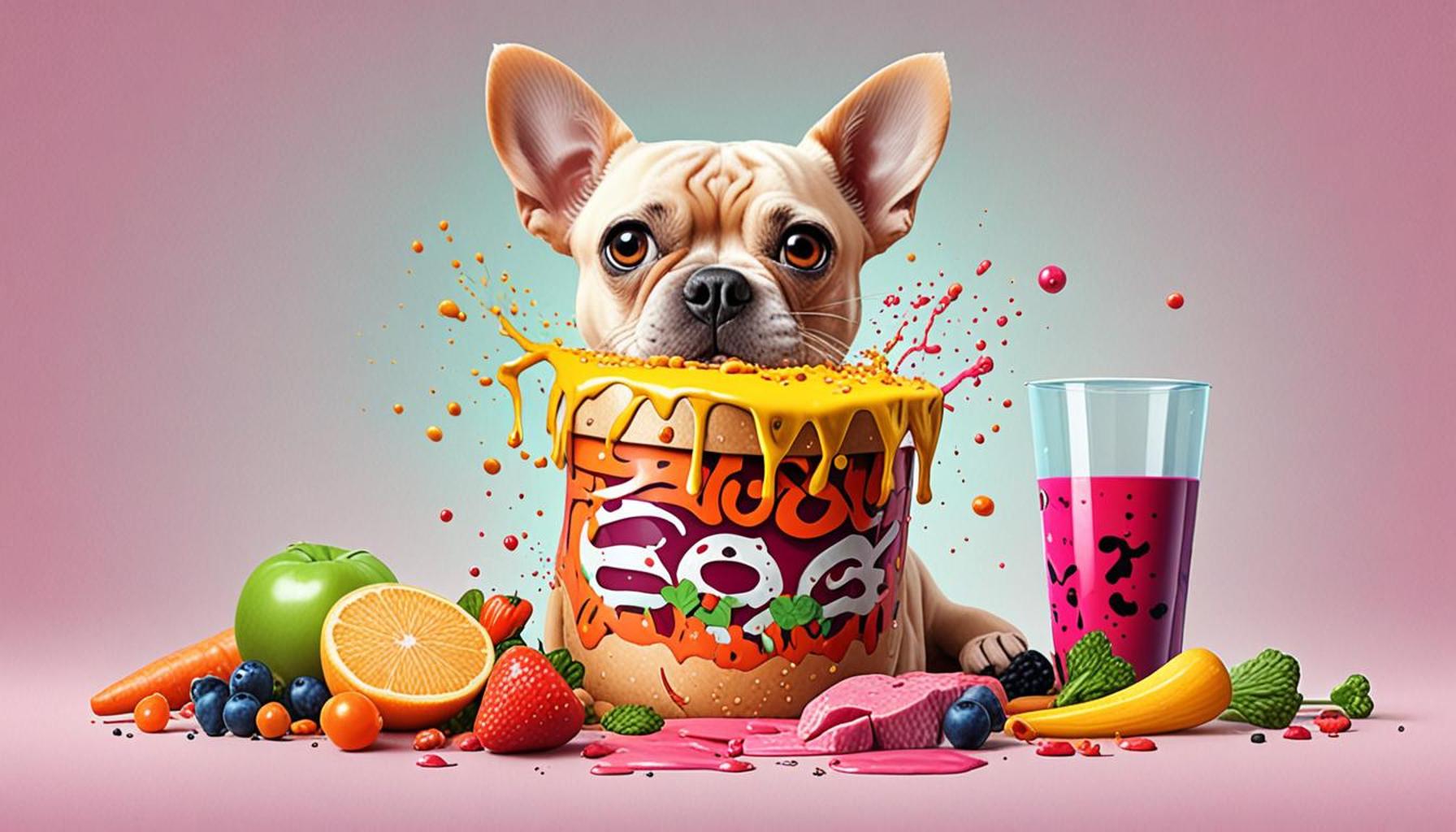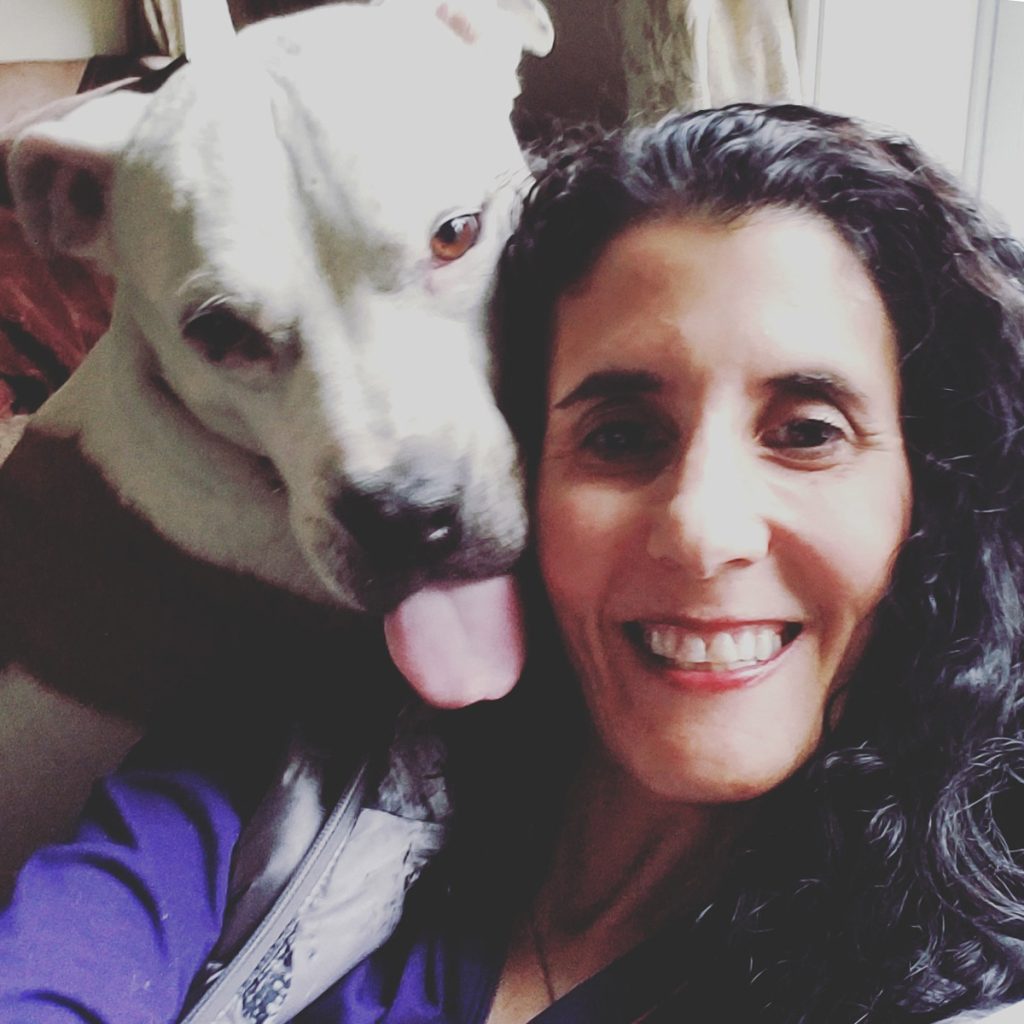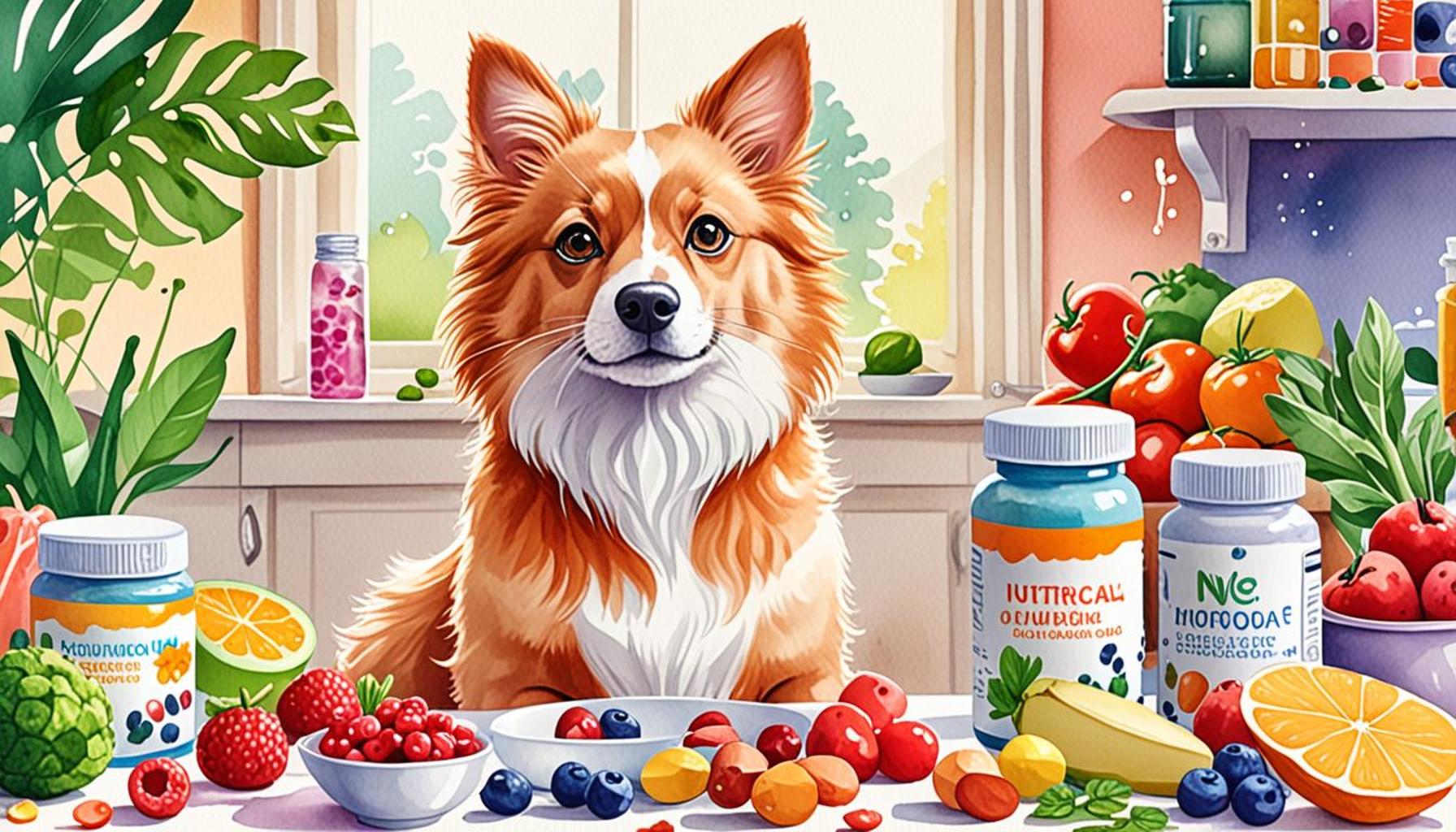Toxic Foods: What Should Never Be Part of Your Pet’s Diet

Understanding the Dangers of Toxic Foods for Pets
Pet owners often think they know what’s best for their furry friends, but the reality is that many common foods are more dangerous than they appear. The line between safe and toxic can be dangerously thin, with several everyday items posing significant risks to the health of our beloved companions. Toxic foods can lead to severe health issues and, in some cases, even be life-threatening.
Understanding which foods to avoid is crucial for your pet’s well-being. Many owners may be surprised to learn that their favorite snacks could be perilous for their pets. Here are some common foods that should never find their way onto your pet’s plate:
- Chocolate – Chocolate contains theobromine, a compound that is toxic to both dogs and cats. Animals metabolize it much more slowly than humans, making even small amounts potentially lethal. For instance, dark chocolate, which is rich in theobromine, can be particularly hazardous. A small dog could experience vomiting, rapid heartbeat, and even seizures after consuming just a few pieces.
- Onions and Garlic – These popular kitchen staples contain compounds called thiosulfates, which can cause oxidative damage to red blood cells in pets. This can lead to a condition known as hemolytic anemia, characterized by symptoms like lethargy, weakness, and in severe cases, organ failure. Even cooked forms of these foods remain dangerous, meaning pet owners need to be cautious with leftovers.
- Grapes and Raisins – Surprisingly, grapes and raisins are among the most toxic foods for dogs. Even tiny quantities can lead to acute kidney failure, a devastating condition that can arise from as little as a few grapes or a handful of raisins. Symptoms include vomiting, diarrhea, and a lack of appetite. Due to the unpredictable nature of this toxicity, it is recommended to keep these fruits far from curious paws.
Not all human foods are suitable for animals. Some items may seem harmless or even nutritious but can lead to dire consequences. The Centers for Disease Control and Prevention (CDC) has noted an alarming rise in pet poisonings linked to human food consumption, underlining the importance of vigilance in the kitchen.
To protect your furry friends, it is crucial to familiarize yourself with these harmful foods and how to read pet food labels carefully. Knowledge about your pet’s dietary needs can save lives, ensuring they enjoy a safe and healthy diet, free from hidden dangers. Engaging in discussions with your veterinarian about safe treats can also provide clarity for pet owners.
Diving deeper into this crucial topic will equip you to make informed decisions about what to feed your beloved pet, safeguarding their health and happiness.

DISCOVER MORE: Click here to learn about the benefits of probiotics
Common Toxic Foods to Avoid in Your Pet’s Diet
When it comes to pet ownership, many individuals see their furry companions as family members, often sharing not just their homes, but also their meals. However, while certain human foods might seem innocuous, some can pose serious health threats to pets. Below are a few additional toxic foods that pet owners should be vigilant about:
- Avocado – This trendy food, popular for its health benefits in human diets, can be harmful to pets. The pit, skin, and even the flesh of avocados contain a substance called persin, which can lead to vomiting and diarrhea in dogs and cats. High doses can even result in more severe health issues, particularly in smaller animals.
- Macadamia Nuts – Known for their rich, buttery flavor, macadamia nuts are particularly dangerous for dogs. Consumption can lead to a range of symptoms including weakness, depression, tremors, and hyperthermia. Even a small amount can produce these distressing effects, making them a no-go in any pet household.
- Xylitol – Often found in sugar-free gum, candy, and some peanut butter brands, xylitol is highly toxic to dogs. It can cause a rapid insulin release, leading to hypoglycemia (low blood sugar), seizures, liver failure, and even death. Pet owners should always check labels for this artificial sweetener when purchasing treats.
- Alcohol – While most pet owners wouldn’t intentionally offer their pets a drink, it’s vital to note that even small amounts of alcohol can lead to severe health consequences. Alcohol can cause vomiting, diarrhea, coordination problems, and can be fatal, particularly in smaller animals.
Aside from these known hazards, numerous other foods can be equally perilous. Items such as caffeine in coffee and tea, certain types of fish (like raw salmon), and some artificial sweeteners should all be treated with caution. It’s essential to remember that animals have different metabolic processes compared to humans, meaning that what is safe for us can be toxic to them. The American Society for the Prevention of Cruelty to Animals (ASPCA) maintains a comprehensive list of foods that are harmful to pets, which is a valuable resource for concerned pet owners.
Maintaining a safe diet for your pets goes beyond mere avoidance of known toxic foods; it necessitates an understanding of what constitutes a balanced and beneficial diet for them. Consulting with a veterinarian can not only help in identifying safe options but also set guidelines for healthy treats and proper nutrition tailored to your pet’s specific needs. By doing your homework and being aware of the potential dangers lurking in your pantry, you can prevent accidental poisonings and ensure your furry friend lives a long and vibrant life.
| Toxic Food | Dangers |
|---|---|
| Chocolate | Causes seizures and can be fatal. |
| Grapes and Raisins | Can lead to acute kidney failure. |
| Onions and Garlic | Harm red blood cells, causing anemia. |
| Avocado | Toxic to birds and can cause vomiting. |
| Xylitol | Can cause severe hypoglycemia and liver failure. |
Recognizing the potential hazards of certain foods is crucial for pet owners. Chocolate remains one of the top dangers, mainly due to its high theobromine content, affecting a pet’s central nervous system drastically. Grapes and raisins, often overlooked, can lead to life-threatening kidney damage, even in small quantities. Onions and garlic might seem harmless in meal preparation, yet they can devastate a pet’s blood health over time.Avocado, while nutritious for humans, poses risks particularly to dogs and birds alike, leading to digestive distress. Lastly, xylitol, an artificial sweetener found in sugar-free products, is extremely toxic and can result in grave health consequences very quickly. Being informed and vigilant about these foods ensures a safer dining experience for your beloved pets and protects their health from unforeseen dangers.
DIVE DEEPER: Click here to learn more
Foods to Keep Away from Your Beloved Pets
As pet owners, keeping our companions safe is a top priority. While the previous section highlighted some well-known toxic foods, it’s crucial to dive deeper into less obvious dangers that can disrupt your pet’s health. Understanding these can be vital in creating a safe environment for your furry friends.
- Onions and Garlic – Members of the allium family, onions and garlic are often staples in many household dishes. However, for dogs and cats, these foods can cause oxidative damage to red blood cells, leading to hemolytic anemia. This reaction may not be apparent immediately; symptoms can take several days to manifest and may include weakness, vomiting, and abdominal pain. Even powdered forms found in many sauces can pose risks.
- Chocolate – A beloved treat for humans, chocolate harbors compounds like theobromine and caffeine, which are toxic to pets, especially dogs. Symptoms can range from vomiting and diarrhea to seizures and, in severe cases, death. Dark chocolate and baking chocolate contain higher concentrations of these compounds, making them particularly dangerous. It’s critical to store chocolates well out of pets’ reach.
- Grapes and Raisins – Though small and often overlooked, grapes and their dried form, raisins, can cause acute kidney failure in dogs. The exact toxic substance remains unidentified, but even a handful can trigger serious health issues, including vomiting, lethargy, and abdominal pain. Pet owners must avoid sharing any form of these fruits with their canine companions.
- Fat Trimmings and Bones – While it might seem natural to share leftovers with pets, doing so can lead to problems. Fatty pieces of meat or skin can cause pancreatitis in dogs, leading to severe vomiting and abdominal pain. Cooked bones can splinter and cause obstructions or lacerations in the digestive tract, creating emergencies that can be life-threatening.
Furthermore, pet owners should also be cautious with foods that contain caffeine, found in coffee, tea, and energy drinks. Much like chocolate, caffeine can lead to elevated heart rates, restlessness, and in extreme cases, death. Even small amounts pose risks, particularly to smaller animals.
It’s essential to remember that many human foods might hold no immediate toxicity but can contribute to long-term health issues in pets. Foods high in fat, sugar, or salt could lead to obesity, diabetes, or even heart problems over time. Always provide treats specifically formulated for pets to ensure they receive the proper nutrition tailored for their dietary needs.
Additionally, some seemingly harmless plant-based foods can harbor hidden dangers. For example, certain types of mushrooms, especially those found in the wild, can be dangerous and potentially fatal to pets. When exploring the outdoors with your furry companions, education is key to avoiding accidental ingestion.
In summary, a proactive approach to pet safety involves not just knowing which foods to avoid but also creating a thorough understanding of a safe diet. Consulting resources like the ASPCA and your veterinarian for guidance can lead to better-informed choices, ensuring your pet remains healthy and vibrant.
DIVE DEEPER: Click here to learn how communities are making a difference</
Conclusion
As devoted pet owners, understanding the dangers of toxic foods is crucial for safeguarding our beloved companions. The insights shared throughout this article emphasize that not all threats come from obvious sources. Ingredients commonly found in our kitchens, like onions, garlic, and even certain fruits, can pose significant health risks, potentially leading to severe health conditions or even fatal outcomes.
Recognizing the full spectrum of harmful foods, including chocolate, grapes, and bones, underlines the importance of vigilance when it comes to your pet’s diet. Additionally, long-term health issues linked to the consumption of unhealthy human foods can complicate their well-being, making it essential to focus on a balanced diet tailored for their needs. For instance, high-fat, high-sugar, and high-salt foods can lead to obesity and diabetes, far beyond the immediate dangers of toxic snacks.
Furthermore, as we explore outdoor adventures with our pets, we must be cognizant of potential hazards like certain types of wild mushrooms, which serve as a reminder that education is our best defense against accidents. By consulting reliable resources like the ASPCA and working closely with your veterinarian, you can stay informed about safe and nutritious choices. Ultimately, a proactive approach toward your pet’s dietary management will not only enhance their health but also enrich the joy they bring to your life. Protecting our furry friends keeps them lively and cherished for years to come.



